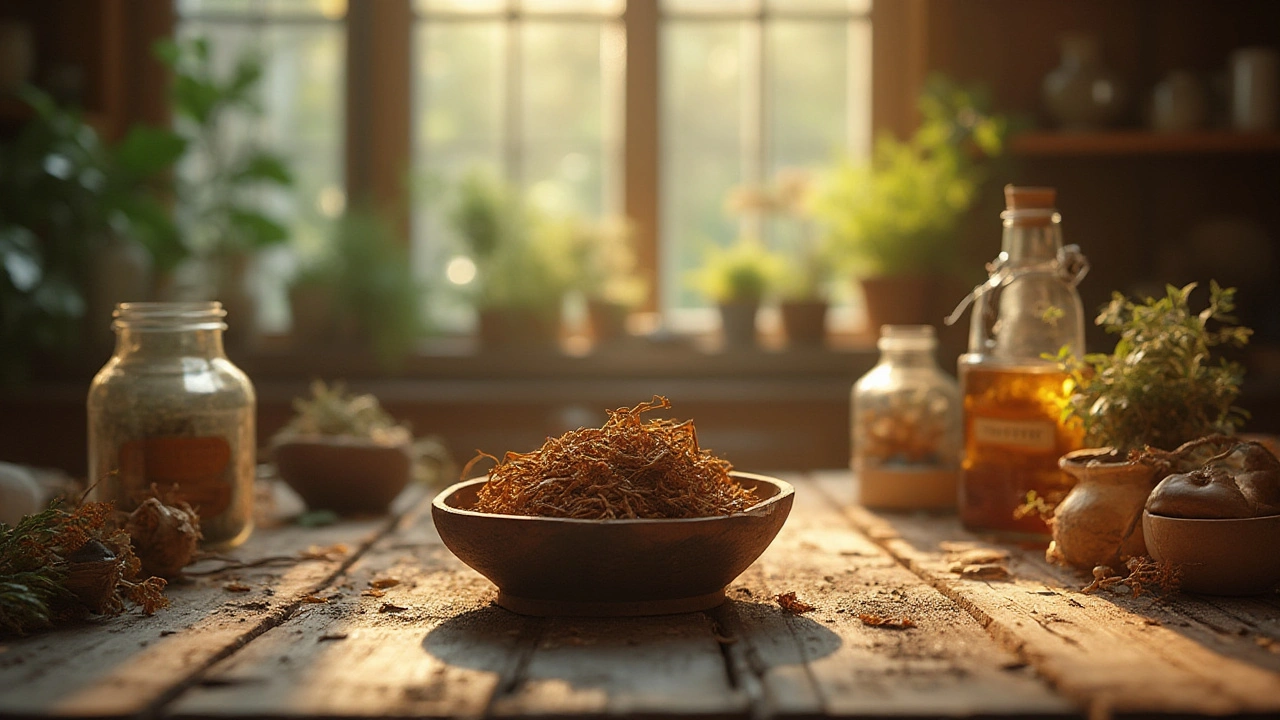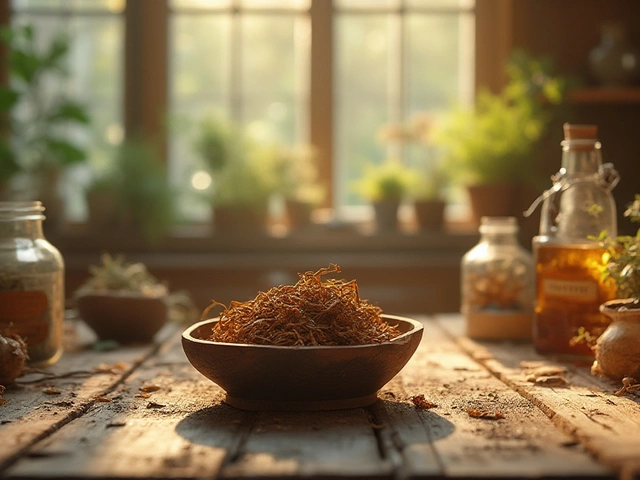If you had to name the world’s most overlooked health hero, bitter wood would top the list. It’s got a name that’s more likely to put people off than pull them in, but don’t be fooled—this woody shrub (also called quassia or amargo) carries centuries of healing stories, from rainforests to local Manchester health shops. What’s truly wild is how modern labs, armed with microscopes and mountains of data, are giving new life to old herbal claims. Let’s dig in and see why bitter wood has made believers out of both shamans and scientists.
The Roots of Bitter Wood in Traditional Medicine
Bitter wood’s history goes back way further than any viral wellness trend. Picture this: for centuries, folk traditions across South America, Africa, and the Caribbean have leaned on this shrub to fight everything from fevers to gut-wrenching digestive bugs. The bark and wood were steeped into teas, chewed straight, or ground into powders. In some cultures like those of Brazil’s Amazon basin, healers would use the infusion before every big meal, swearing by its cleansing bite for digestive trouble. Malagasy communities once carried tiny pieces of quassia as a natural guard against malaria—long before tablets or fancy repellents existed.
The reason? Bitter compounds. These give the wood its mouth-puckering taste, but they also earned it legendary status for warding off worms and easing swollen bellies. Even in Jamaica, street vendors would pass quassia water infused with sugar as a daily pick-me-up in the muggy heat. Chefs in Trinidad sometimes used slivers of bitter wood in cooking, not just for the hidden zing, but for help with keeping food safe from insects and boosting appetite in sticky weather.
People didn’t worry about what molecule did what—they just knew it worked. The elders, herbalists, and medicine makers all tossed bitter wood at fever, diarrhea, and even liver complaints. It was their go-to for that “off” feeling after a bad meal or a bug bite. These homegrown remedies, handed down from generation to generation, laid the groundwork for the curiosity that still surrounds bitter wood today.
Bitter Wood Under the Microscope: Modern Science Steps In
Fast-forward to today and it’s not just your gran’s medicine box anymore. Scientists in labs from London to São Paulo have put quassia amara through its paces. The most talked-about compounds, quassinoids, are responsible for its intensity. Studies in the Journal of Ethnopharmacology (2022) found that quassin and neoquassin, bitter wood’s superstars, can knock out harmful bacteria like E. coli. Another standout? An Italian team reported that bitter wood extract killed parasitic worms in simulated gut environments—echoing what folk healers have claimed for centuries.
Here’s where things get interesting. Trials on rodents, published by Brazilian researchers just last year, suggest quassinoids might have protective effects for the liver. Rats exposed to toxins but also given quassia infusion showed lower liver enzyme spikes compared to those without. It hints at detox benefits often talked about by traditional users. On top of that, researchers are looking at bitter wood’s antioxidant power. Lab tests show it helps mop up damaging free radicals, which could reduce inflammation and support healthy cells over time.
But before you start steeping quassia tea every morning, there’s more you should know. Not all bitter is better. High doses of pure quassinoids, especially from concentrated extracts, may lead to headaches, nausea, or mild dizziness in sensitive people. So, the sweet spot is small, steady doses, much like those used in folk recipes. If you’re taking medications or have ongoing health issues, check with a professional. The research is promising, but it’s practical know-how and a little caution that delivers the real value.
Here’s a quick glance at what researchers and herbalists have discovered so far:
| Benefit | Traditional Use | Modern Findings |
|---|---|---|
| Digestive Health | Infusions for stomach upset, bloating | Antimicrobial action, supports gut function |
| Liver Support | Tonics, teas after rich meals | Reduces toxic enzyme spikes in rats |
| Anti-parasitic | Treats worms, malaria symptoms | Lab-kills intestinal parasites |
| Appetite Stimulation | Taken before meals, during illness | Bitter compounds boost appetite signals |
| Antioxidant Power | General wellness, fatigue | Mops up free radicals in cells |

How People Use Bitter Wood Today
Walk down any herbal aisle in Manchester or scroll through wellness forums and bitter wood is still in the mix—but the formats have changed. Instead of bark chips in a paper sachet, you’ll see tinctures, capsules, and teas with standardized amounts of quassia. Some people keep it simple: a few chips in hot water for a morning detox. Others follow their gym coach’s tip of taking a low-dose bitter wood capsule after a heavy meal, hoping to dodge that sluggish, overstuffed feeling.
In bartending circles, bitter wood makes waves as part of homemade bitters for cocktails and digestive spirits. But it’s not just for a post-dinner Negroni. Some home brewers add a touch to craft up their own tonics. Others use it as a natural bug repellent—think “garden hack” style sprays made from strong decoctions of the wood. The flexibility of bitter wood is part of why it’s stuck around for so long.
If you’re curious about stepping into the world of bitter wood, here’s a roundup of tips for safe and practical use:
- Start with tea: Try a weak infusion (one teaspoon of chips per cup) and see how your body handles it. Slowly work your way up if needed.
- Capsules are easy: If you want something measured, pick a supplement from a trusted source and keep to the dose on the label.
- Add it to food: Just a hint of bitter wood chips in stew or sauce can boost flavor and deliver gentle health effects.
- Use as a rinse: Old-school barbers—especially in warmer places—sometimes used quassia water for scalp health and as a mild lice repellent! A quirky, mostly forgotten tip that still earns quiet fandom.
- Listen to your body: Stop if you notice headaches, stomach cramps, or dizziness. Go for smaller doses or take a break.
Parents sometimes ask about bitter wood for kids. Most herbalists say to stick to adults, just because research on children is still thin. Pregnant or breastfeeding? Skip it. And if you’re already managing a health condition, always get a thumbs-up from your doctor or herbalist before diving in.
Bitter Wood Research: Where Next?
Researchers aren’t done with bitter wood yet. Right now, several teams are exploring new ways to use its quassinoids, hoping to craft medicines with limited side effects. There’s buzz over its use in fighting drug-resistant parasites—which, in a world eager for old-school solutions to modern problems, seems more relevant than ever. Plus, there’s growing curiosity about how bitter wood could boost the effects of existing meds, especially those for gut issues.
But for the average person, the real power of bitter wood lies in blending wisdom from the past with careful steps forward. There’s loads you can do at home—just avoid high-strength extracts unless you know what you’re doing. Always start slow. If you want to explore specific bitter wood benefits, reading about first-hand experiences and modern science together can help you strike that healthy balance.
Bottom line? Bitter wood isn’t just some exotic relic. It’s a living example of how forgotten plants find fresh relevance—whether you’re sipping a tea in Manchester or tracing family roots back to the Caribbean. The science is evolving, but the stories and daily hacks have stood the test of time. Approach it with wonder, a little caution, and the spirit of someone making their own path in the health maze.







Write a comment
Your email address will be restricted to us